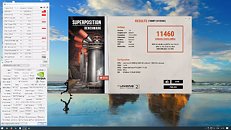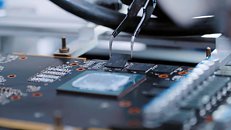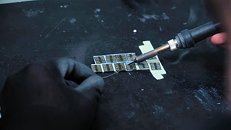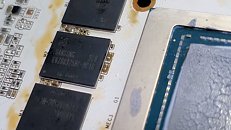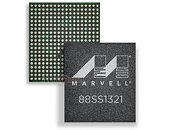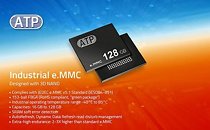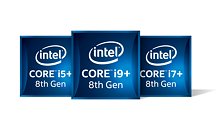
Memory Chip Swap Mod SUPERcharges an RTX 2080 Ti
Overclocking the memory clock of a GeForce RTX 2080 Ti to 2000 MHz (16 Gbps) isn't difficult, but most custom-design RTX 2080 Ti cards cap out at that, and so the enthusiasts over at TecLab took matters into their own hands by pulling off a daring memory chip replacement mod, by installing 16 Gbps-rated memory chips onto a Galax RTX 2080 Ti HOF graphics card. In a 16-minute video presentation, they detail the process of soldering a component as delicate and sensitive as GDDR6 memory chips, and 45 times over. The team had to sacrifice not one, but two Galax GeForce RTX 2080 Super graphics cards, which feature 16 Gbps-rated memory chips to support the SKU's 15.5 Gbps memory clock. A total of 33 manual solder operations had to be performed (removing the 15 stock chips from the RTX 2080 Ti, removing 11 chips from the two RTX 2080 Super cards, and soldering them onto the RTX 2080 Ti).
The group detailed the process of removing the memory chips under hot air, giving the extracted chips fresh ball-grids, and placing the chips onto the RTX 2080 Ti PCB. No BIOS modding was required, as the RTX 2080 Ti card's video BIOS was able to auto-detect the chips and run them at 14 Gbps. From here on, manual overclocking easily runs the card at 2000 MHz (16 Gbps) memory, with overclocking headroom to spare. The memory clock could now be dialed all the way up to 2150 MHz (17.2 Gbps), something that's close to impossible with 14 Gbps chips. TecLab is calling their creation the world's first RTX 2080 Ti Super, which could very well be true. Last we heard, the RTX 2080 Ti Super could get more CUDA cores, and not just faster memory. Nevertheless, this mod blew our minds, and provides valuable pointers on how to solder dense BGA components without a multi million-dollar placer. We tip our hats to TecLab.Watch the TechLab video presentation here.
The group detailed the process of removing the memory chips under hot air, giving the extracted chips fresh ball-grids, and placing the chips onto the RTX 2080 Ti PCB. No BIOS modding was required, as the RTX 2080 Ti card's video BIOS was able to auto-detect the chips and run them at 14 Gbps. From here on, manual overclocking easily runs the card at 2000 MHz (16 Gbps) memory, with overclocking headroom to spare. The memory clock could now be dialed all the way up to 2150 MHz (17.2 Gbps), something that's close to impossible with 14 Gbps chips. TecLab is calling their creation the world's first RTX 2080 Ti Super, which could very well be true. Last we heard, the RTX 2080 Ti Super could get more CUDA cores, and not just faster memory. Nevertheless, this mod blew our minds, and provides valuable pointers on how to solder dense BGA components without a multi million-dollar placer. We tip our hats to TecLab.Watch the TechLab video presentation here.
